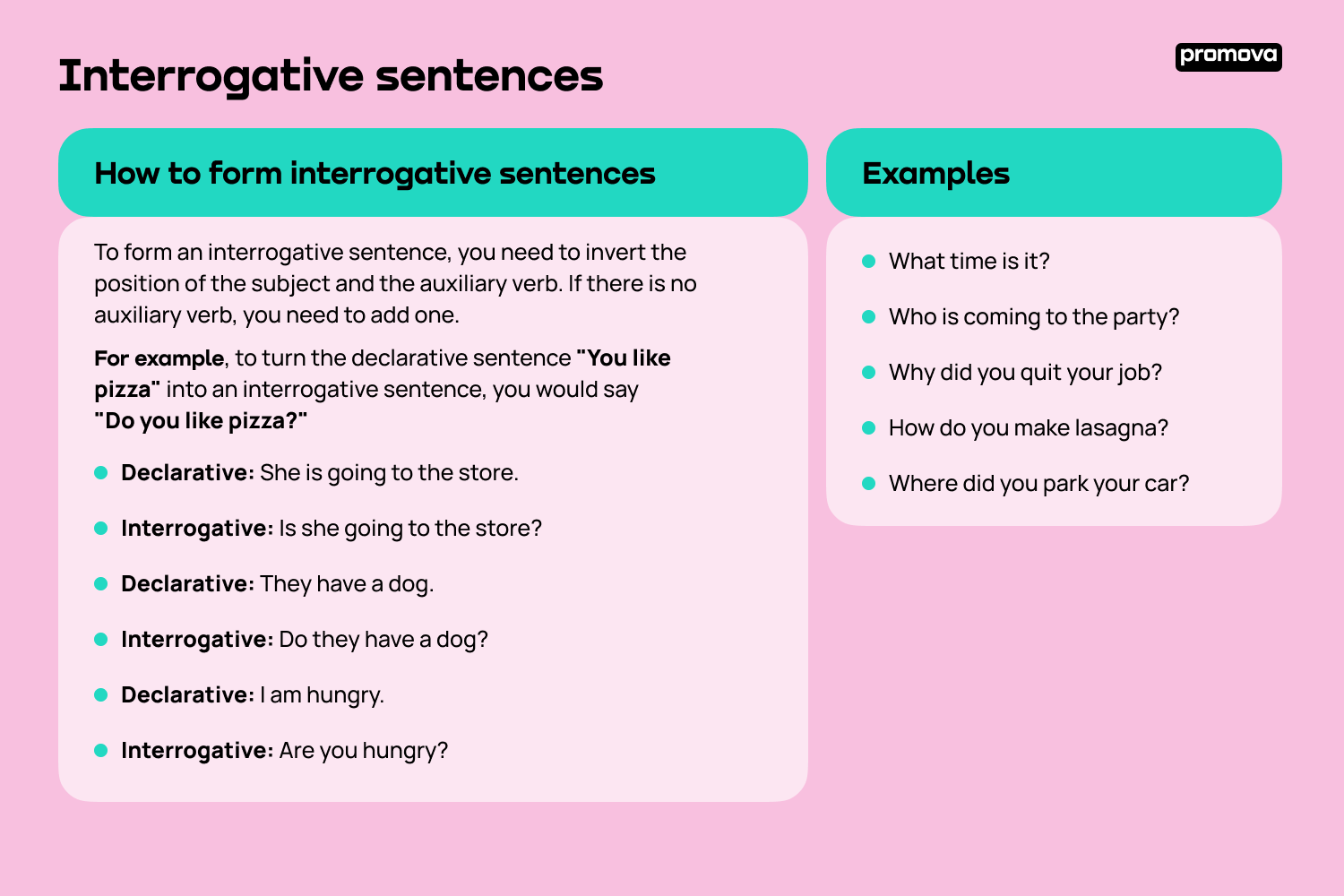Interrogative sentences
Contents
If you’re learning English, you might feel confused about the different sentence types. One of them is the interrogative sentence. In this reference, we’re going to look at what an interrogative sentence is, the various types of interrogative sentences, how to form them, and common mistakes to avoid.
What is an interrogative sentence?
An interrogative sentence helps us ask a question. It is different from a declarative sentence, which makes a statement or expresses an opinion. Interrogative sentences usually begin with a verb, and the subject comes after the verb.
For example, "Do you like pineapples?" is an interrogative sentence because it asks a question. On the other hand, "I like pineapples" is a declarative sentence because it makes a statement.

Types of interrogative sentences
There are three types of interrogative sentences: yes/no questions, wh- questions, and tag questions.
Yes/no questions
Yes/no questions are the most common type of interrogative sentence. They are called yes/no questions because they are answered with a "yes" or "no." These questions usually begin with an auxiliary verb or the verb "to be."
For example, "Are you hungry?" and "Do you want to go to the movies?" are yes/no questions.
Wh- questions
Wh- questions are questions that begin with the words "who," "what," "where," "why," "when," or "how." They are used to ask for more information about something.
For example, "What is your favorite color?" and "Where were you born?" are wh- questions.
Question tags
Tag questions are questions that are added to the end of a statement. They are used to confirm or clarify information.
For example, "You like pizza, don't you?" and "She's a doctor, isn't she?" are tag questions.
How to form interrogative sentences
To form an interrogative sentence, you need to invert the position of the subject and the auxiliary verb. If there is no auxiliary verb, you need to add one.
For example, to turn the declarative sentence "You like pizza" into an interrogative sentence, you would say "Do you like pizza?"
Here are some other examples:
- Declarative: She is going to the store.
- Interrogative: Is she going to the store?
- Declarative: They have a dog.
- Interrogative: Do they have a dog?
- Declarative: I am hungry.
- Interrogative: Are you hungry?
Examples of interrogative sentences
Here are some more examples of interrogative sentences:
- What time is it?
- Who is coming to the party?
- Why did you quit your job?
- How do you make lasagna?
- Where did you park your car?
2
Difference between declarative and interrogative sentences
The main difference between declarative and interrogative sentences is that declarative sentences make a statement, while interrogative sentences ask a question.
For example:
- Declarative: The sky is blue.
- Interrogative: Is the sky blue?
- Declarative: She is a doctor.
- Interrogative: Is she a doctor?
Common mistakes
Common mistakes to avoid when forming interrogative sentences:
- Forgetting to invert the subject and auxiliary verb
- Using the wrong auxiliary verb
- Forgetting to add an auxiliary verb when there isn't one in the declarative sentence
- Using the wrong word order in wh- questions
Summary
Interrogative sentences exist to ask questions and gather information. There are three types of interrogative sentences: yes/no questions, wh- questions, and question tags. To form an interrogative sentence, you need to invert the position of the subject and auxiliary verb. If you follow these rules, you'll learn to ask great questions in a very short order!
Comments